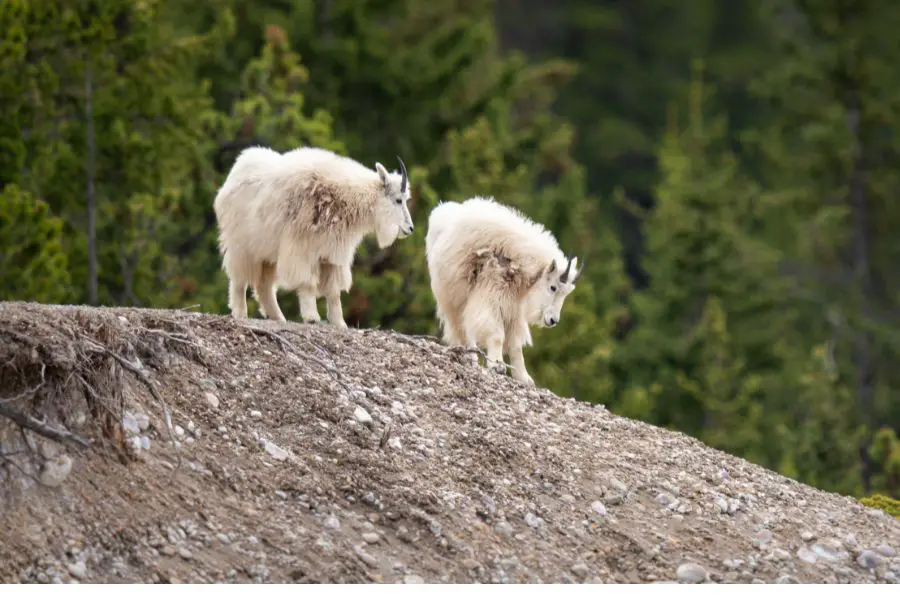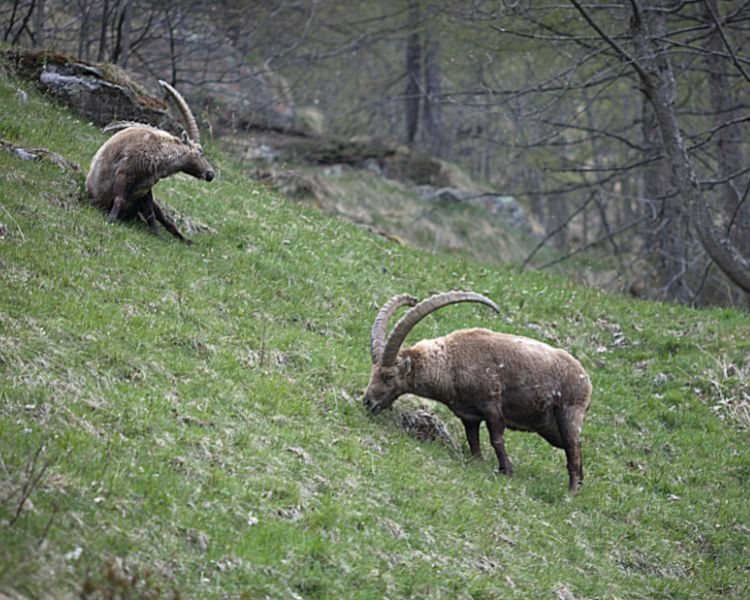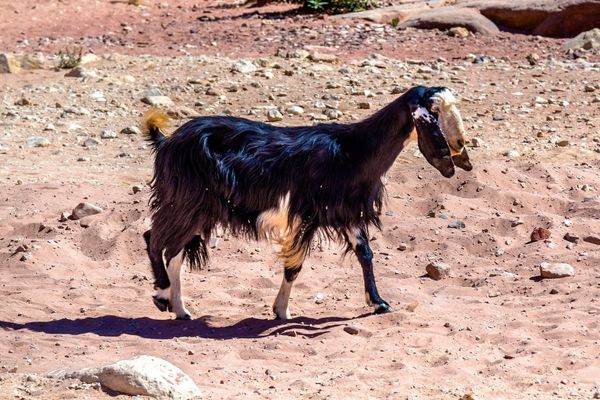The mention of mountain goats invokes images of surefooted wild beasts perching precariously on cliff faces. Luckily, many domesticated mountain goats won't need you to have the agility of a professional rock climber to get a glass of milk. But do mountain goats produce milk?
Mountain goats are prolific milk producers, but it comes down to the breed. Alpine goats, Syrian Jabali, Irish Mountain goats, and Changra goats are renowned for their high milk yield. Goat's milk is treasured for its high nutritional value, lower lactose content, and digestibility.
Dig in as we explore the milk yield of these mountain goats and whether they can sustain your family's milk needs.

What Are Mountain Goats?
Despite the name, mountain goats aren't true goats. They don't even belong in the same genus as goats. These magnificent creatures are close to gazelles, antelopes, and cattle than goats. These herbivores live in alpine and subalpine environments in different countries, including the US. These graceful and powerful beasts can live up to 12 years and weigh between 100 and 200 pounds. There are about 13 types of mountain goats spread across different regions in the world.
Here are four of the best milk-producing mountain goats in the world.
1) The Alpine Goat

Also known as the French Alpine goats, this breed of mountain goats is bred for milk production. Alpine goats are prolific milk producers commonly found on farms and homesteads. Alpine goats produce 1 to 2 gallons of milk daily, depending on various factors such as health, diet, and nutrition.
On average, an alpine goat produces about 2,134 pounds of milk per lactation, which is more than enough to cater to the needs of a small family. In addition, alpine goat milk is healthy because the average butterfat content is about 3.5%. The milk is also rich in niacin, calcium, and vitamin A.
Alpine goats have a gentle disposition, a large body structure, and a well-developed udder with large teats. They're primarily bred for milk production, but the excess males are slaughtered for meat.
2) Syrian Jabali Goat
Originating from the Jabali mountains in Syria, the Syrian Jabali goats are primarily bred for milk production. They're black, have curved heads with drooping ears, and can thrive in an extremely harsh environment. They're the most common goat breed in Syria because they can withstand prolonged drought, water scarcity, and extreme climate fluctuations.

The average Syrian Jabali doe produces about two pounds of milk per day, but the most prolific milkers can yield up to 3.5 pounds of milk a day. Given the harsh conditions these goats are raised, these goats boast an impressive milk production capacity. Syrian Jabali goats are also raised for meat and are often left in the wild with supplemental feeding during winter.
3) Irish Mountain Goat
Also known as the Old Irish Goat, Irish mountain goats are an indigenous, landrace goat breed. The small, stock breed supports its deep body on short, strong legs, shaped by the harsh Irish climate for more than 5,000 years. However, these goats have been extensively crossbred with imported, domestic goats, which has watered down most of their original adaptations and characteristics.
These cold-weather goats have a long wool coat with 12 different patterns and a cashmere underwool. They go by the moniker "coat of many colors."
The Irish Mountain goats are bred primarily for milk and cashmere production. When domesticated, an Irish Mountain goat produces about 200 gallons of milk a year, which is enough to meet the demands of a small family. Excess males are also slaughtered for meat.
4) Changra Goat
Also known as Pashmina goats, Changra goats produce pashmina fiber, one of the finest and most expensive natural fibers. They're horned, medium-sized mountain goats with a blocky build. White is the most dominant color on these goats, which tend to be cautious and alert due to their feral ancestry.
Since Changra goats are primarily bred for their beautifully soft fur, they're relatively poor milk producers. They produce about 700 ml of goat milk daily and have a short lactation period. A Changra goat only produces milk for about five months after kidding. Their milk production range of 200 to 500 ml per day can hardly sustain the milk needs of a small family. But then again, these goats are bred to produce the most expensive fiber in the entire world.
Mountain Goats are Prolific Milk Producers
Despite not being true goats, mountain goats have been largely domesticated and interbred with other goat breeds. Goat breeders use the breeding process to amplify the most profitable feature in a mountain goat.
Alpine goats and Syrian Jabali goats are the world's most prolific milk-producing mountain goats. Changra goats are the least prolific milkers on this list, but they produce the world's most expensive cashmere wool, which makes up for their poor milk production.
